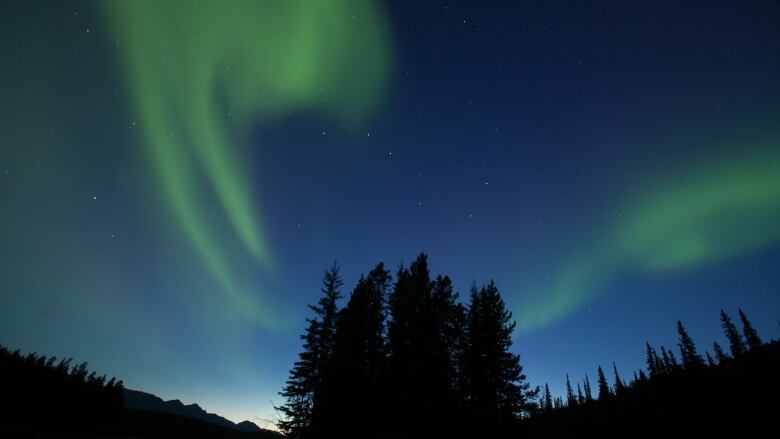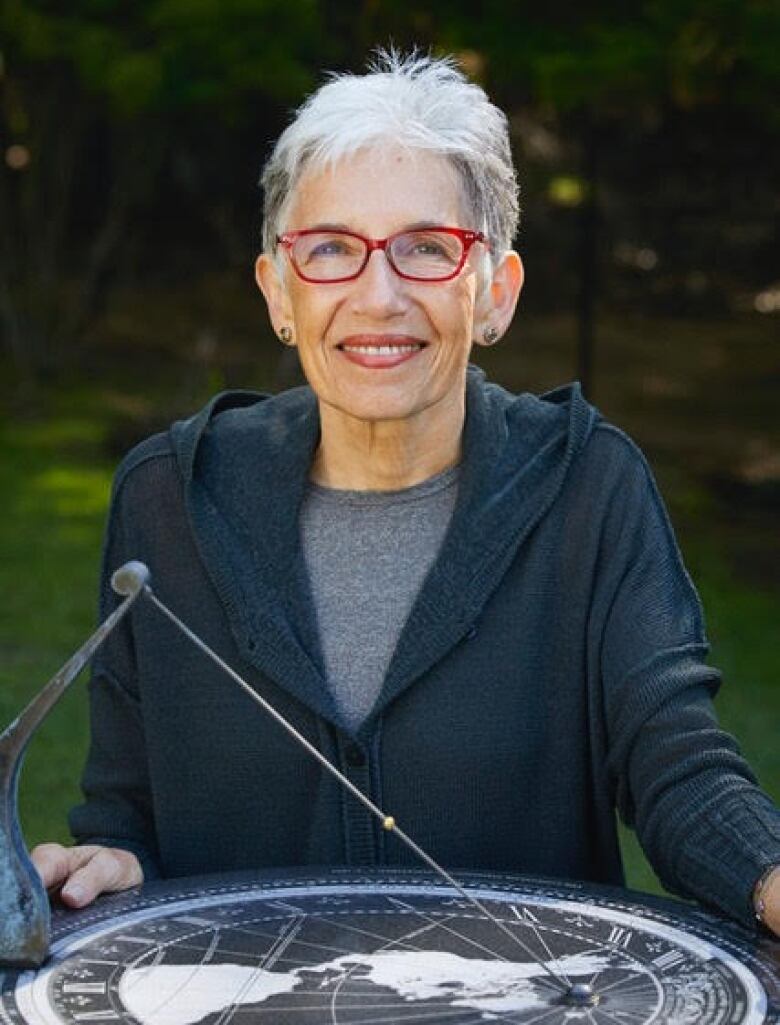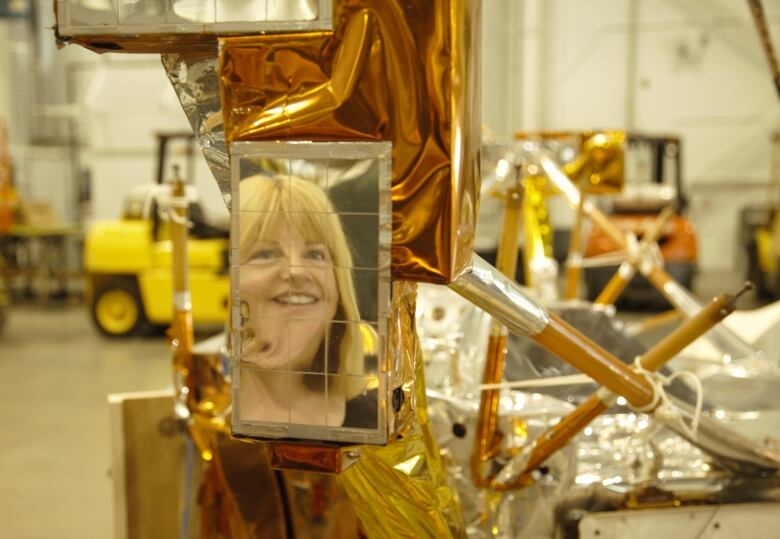B.C. poet illuminates pages of popular scientific magazine with verses about the nature of light
Donna Kane's poem on visible light, which weaves together science and imagery, features in Scientific American

On clear summer nights, poet Donna Kane sleeps on the front deck of her farmhouse in Rolla, B.C., in an old-fashioned bedunder a blue quilt printed with crescent moons.
The writerdraws inspiration from looking at the sky in this northern part of the province, more than 750 kilometresdistantfrom Vancouver.
"I feel connected.I feel like I'm part of something bigger than myself, and I feel comforted by that.You're looking at the origins of light when you're lying there, looking up at the stars," Kane said.
Kane's musings about star light in the night sky inspired her to write a poem that blends scientific principles and the human experience oflight's reflection a poem that now appearsin a respected U.S. sciencemagazine.
The poem,On Visible Light,was published in the Julyedition ofScientific American magazine, alongside more traditional scholarly researchonthe thermodynamic limit, momentum computingand interstellar space.
For Kane, the inclusion of her poem is proof that literature and science are more closely connected than many people believe.
"I've always thought science and art are very, very similar, trying to discover the mysteries of the world and the universe. They both have that urge," Kanetold CBC News.
"Poetry explores. Ideas can emerge from really good poemsthat maybe scientists hadn'treally thought of in that same way."

Kane's poem is a villanelle,astructured type of poem with refrains and a strict rhyming pattern, a formthat dates back hundreds of years. Sheweaves together scienceand imagerywith lines like"Just a slice of electromagnetic/wavelength and sight is ours, a blindness gone/ at the end of travelling through our nights."
Its appearance in the pages of Scientific American, which has more than eight million online readers worldwide each month, has broughtKanestratospheric exposure.
"I'm pretty sure I'm never going toget a bigger audience than that," said Kane. "Usually the reach of poetry is very small."

The editor of Scientific American's poetry column,Dava Sobel, told CBC News that Kane's poem is "gorgeous."
"It's emotionally evocative and yet scientifically informative. And it adheres to a very strict poetic form. So it's a difficult thing to achieve. But she's really done it," said Sobel, a former science writer for the New York Times who was a finalist for the Pulitzer Prize.
Sobel, who hadastronaut Neil Armstrong write the forward to one of her books and alsohas an asteroid named after her,believes that poetry can illuminatescience.
"Creativity flows smoothly between those two," she said.

Sobelsaid Scientific American published poetry in its very first issue in 1845 but onlyfeatured rarely since,until she launched a monthly science poetry column in the magazine in 2020.
Since then, in addition to Kane's villanelle, she'sincluded poemswritten by Nobel Prize winners in chemistry and physics.
"Poetry should not be off limits to anybody, nor should science," she said.
Even though it's an imaginative work, Kane's poem still had to meet the bar for accuracy and wasrigorously fact checked by Scientific American before it was published.
"They're pretty serious that ... what you've writtenis accurate. You can do playful things, but the poem has to stand up to the actual science," said Kane.

The poet said she's always loved science and has written other works about space.
Her 2020book, Orrery: Poems, featured a number of piecesabout Pioneer 10,a space probe launchedto study Jupiter's moons. It was a finalist for aGovernor General's Awardfor English-language poetry.
One of her space-themed poems will be included in a forthcoming anthologypublished by Cambridge University Press.












_(720p).jpg)


 OFFICIAL HD MUSIC VIDEO.jpg)
.jpg)



























































































